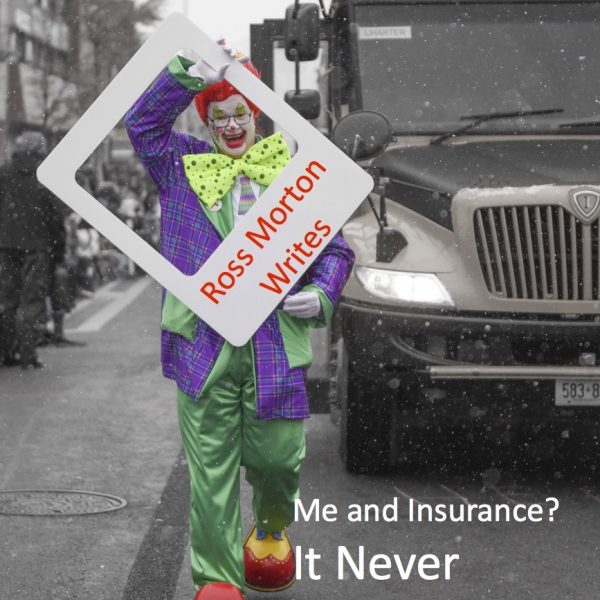For the past 4 years, no forever, financial underwriting has been a mystery to all the neophytes approaching their first large risk appraisal. With great trepidation the risk appraiser moves cautiously, page by page, in search of the holy grail (they did find it is Daniel Brown’s book, right) in insurance. Pellucid financial justification or the undeniable link between owner, insured and beneficiary is the mandate of the underwriter. It is indeed the underwriters’ Holy Grail.
The underwriter has studiously spent years learning all the medicine they need to know to do heart surgery or make a psychiatric diagnosis. One wonders what a psychiatrist would label a person who believes without formal medical training that they can predict the rate of death of people. We label the person an underwriter. They do spend an amazing amount of time learning medical underwriting as it is called to the point they are so engrossed I nit they may not see the risk from the impairments. This is not meant to knock today’s underwriting education but merely but merely, no vociferously, state there has to be a balance between the medical and the nonmedical. The risk is more than a well controlled diabetic at age 42. It is a 42 year old diabetic who wants to buy insurance now for what reason — who is to benefit? Who is to pay the premium? Why now? Why so much?
Looking back I had a rudimentary education through outdated texts, medical doctor mentors and sage underwriters’ counsel in medical underwriting but an intense immersion in “does it make sense” or as many today refer to as “holistic underwriting”. The whole risk is most often greater than any sum of the parts and the mechanical approach of today’s underwriting clinicians seems at times to be blind to whole risk. Regardless of examples learned the hard way in many markets around the world they go ignored under the mantra of “it will never happen here” or “that only happens in textbooks to scare us”.
On a recent tour of duty and pleasure amongst global underwriters I heard of current (right then and there real cases) issues arising where because of poor diligence 5 insurers were faced with what appeared to be a case of fraud where the insured loaded up from five companies and then “died” (at least there was somebody’s body in the funeral pyre). Each policy was greater than t he average size normally issued in the market. In total the amount was extravagant and the agent’s notes were pathetic but overlooked by the eager medical underwriters (five of them). Did they all miss the risk? Yes but medically they did a great job.
Quickly on to the next country. Man makes claim for loss of left arm from below elbow. Poor man lost it at job site where as a butcher’s helper he says he accidentally cut off is arm. That is certainly sad and it makes me want to pay the “dismemberment benefit” soonest. Wait! What is this; the arm is not at the work site nor is there any blood on the table the “accident” supposedly happened at? Further digging reveals the arm was found in an old shed and the person it turns out was out to defraud the insurer. Buy as much as you can and then inflict the unthinkable (at least in my world) by chopping your own arm off! Luckily the claims person noted it all made no sense — relative to person’s income and status in life the amount was exorbitant but okay as who really does financial underwriting on dismemberment policies or benefits? Long court case to fight and in the end the cost is still high to say no to the claim. Could the underwriter have foreseen the pending fraud? Probably not and thus we move on even though there is lots of controversy over that companies financial underwriting.
Next country and we see the North American phenomenon of lower prices bring “churning” and rampant replacements as soon as the charge back period is over. For years actuaries fall over each other lowering prices based on ever greater speculative pricing. They hide the steep and slippery slope downwards in ever harder to delineate risk classification monikers while pricing out the cost of delineation. Now the savvy and fiduciarilly sound advisor (agent, broker, and producer) has a strong duty to client who remains in good health or is cleverly hiding ill health to “churn” the business. Then full circle back to the actuary who says that is not fair since it leaves my old portfolio stripped of the much needed healthier lives and my mortality results will pale in comparison to that which was assumed in pricing. Not to worry because I am writing much more “new” business at lower premiums and inferior underwriting (remember the costs have been stripped to eliminate many standard requirements used that helped build the great mortality results of the 1980’s, 90’s and early 00’s.
In spite of the hazards of racing the price downward and encouraging “churning” these new countries know that like NA they can blame the “churning” on marketing and sales or better still lets tell the underwriter to fight the marketing people over justification and keep the actuary pure and free of incrimination.. Talks of cost slashing justification is focused on using smoker non-smoker splits and then let’s go to preferred even though we hardly have enough statistics to reflect select premiums from aggregate. In the emerging “churning” markets, without a clear mandate to control true replacements or seriously restrict the issuance of the new with the lapsation/termination of the old, the issues are a rising again without solutions. Instead overinsurance abounds as they do nothing to guarantee that the total in force is controlled beyond the weak “it is my intent to replace”. The latter comment in most applications has about as much validity as saying the Toronto Maple Leafs will win the Stanley Cup (last won in 1967 so at least I was around to witness it).
What is the solution to the underwriting the whole risk including “does it all make sense”. We can start with an equal amount of financial training by accountants, preferably those who did not work on the likes of Enron but do have forensic expertise. In most of companies the expertise lurks in both the investment and accounting areas where people routinely read, analyse and conclude on t he validity of value of an enterprise. That is our wise counsel. To take the financial texts of investigative accounting and investment and distil it into underwriting texts is the challenge and we as an industry have yet to do that.
In the very early 1980’s or very late 1970’s one of the world’s wisest underwriters had assembled the true financial expertise (both accounting and legal) and held education sessions for a handful of eager ears. Most of those ears went on to be the best “holistic” underwriters of modern times. At the same time those who became engrossed in only the medicine of more laboratory testing and mechanics fell woefully short of being “holistic underwriters”. Bob left the industry and with it his ability to garner the educators and the students to a common goal. Today there is indeed a grave shortage of mentors on the subject of “holistic underwriting”. Medicine is more than well served by tremendous expertise. Every where I poke my head (the rest of the body is slower to arrive these days) the demand for financial underwriting training — more please is the call over and over again.
It is not in the numbers stupid. It is in the whole case from the agent who writes the application up and their supposedly field underwriting to the senior officer who approves the underwriting budget. Somewhere in there we have to be able to learn to look between and through the numbers and discover what is really happening. In 99% of the cases it is obvious and there is nothing to get nervous about but to find the other 1% we have to look a t the whole case. Thanks Charlie (and Mom) for constantly asking me to ask “Does it make sense?” Wherever I go today it is still the best lesson to learn in underwriting and I hope every neophyte learns it early and before they are faced with 5 claims, five companies, five agents and worth five times more dead than alive. It does happen and in every country that ignores the global experience and underwriting weaknesses.
Ross A. Morton
ReassurerAdvisorMentor
2005-02-24
Approximately over Regina, Canada

